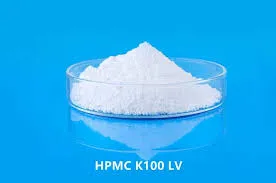
Sen . 22, 2024 14:57 Back to list
hpmc chemical structure
Exploring the Chemical Structure of HPMC A Key Polymer in Modern Applications
Hydroxypropyl methylcellulose (HPMC) is an important cellulose derivative widely utilized in various industries due to its unique chemical structure and exceptional functional properties. Understanding the chemical composition of HPMC not only sheds light on its diverse applications but also underscores its significance in fields such as pharmaceuticals, food science, construction, and cosmetics.
HPMC is formed by modifying cellulose, a natural polymer derived from the cell walls of plants. The modification occurs through the substitution of hydroxyl groups on the cellulose backbone with hydroxypropyl and methyl groups. This process enhances the solubility and stability of cellulose, allowing it to dissolve in both cold and hot water, which is an essential property for many applications.
Exploring the Chemical Structure of HPMC A Key Polymer in Modern Applications
One of the most significant aspects of HPMC’s chemical structure is the hydrophilic nature imparted by the hydroxypropyl groups. This characteristic allows HPMC to retain water and form gels, which is particularly beneficial in the pharmaceutical industry where it is used as a thickening agent, emulsifier, and stabilizer in drug formulations. HPMC’s ability to form stable gels also makes it a popular choice in the production of controlled-release drug systems, where it regulates the release of active ingredients over time.
hpmc chemical structure

In the food industry, HPMC serves as a food additive to improve texture and moisture retention. Its emulsifying properties help stabilize food products, while its thickening capabilities enhance the mouthfeel of sauces, dressings, and desserts. Additionally, HPMC is utilized in gluten-free products as a binding agent that mimics the functional properties of gluten.
Moreover, HPMC has a strong presence in the construction sector, particularly in cement-based materials. It functions as a water-retaining agent, facilitating better workability and improving the adhesion of mortars and plasters. Its incorporation in construction materials enhances performance by preventing cracking and increasing strength.
In the cosmetics and personal care industry, HPMC is valued for its ability to form films and retain moisture, making it a popular ingredient in creams, lotions, and shampoos. Its mildness and non-toxic nature also contribute to its widespread use in products applied to sensitive skin.
In conclusion, the chemical structure of HPMC plays a pivotal role in its functionality across various industries. With its versatile properties stemming from the modification of cellulose, HPMC continues to be an essential polymer that meets the demands of contemporary applications, embodying a perfect blend of natural origin and advanced functionality. As research and development in polymer science progress, the potential for new applications and improved formulations of HPMC is virtually limitless.
-
Versatile Hpmc Uses in Different Industries
NewsJun.19,2025
-
Redispersible Powder's Role in Enhancing Durability of Construction Products
NewsJun.19,2025
-
Hydroxyethyl Cellulose Applications Driving Green Industrial Processes
NewsJun.19,2025
-
Exploring Different Redispersible Polymer Powder
NewsJun.19,2025
-
Choosing the Right Mortar Bonding Agent
NewsJun.19,2025
-
Applications and Significance of China Hpmc in Modern Industries
NewsJun.19,2025







